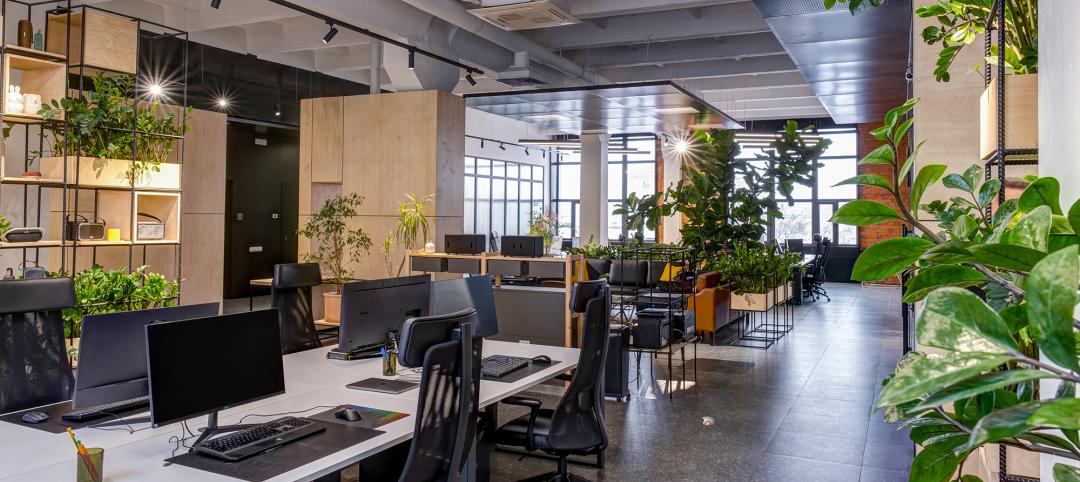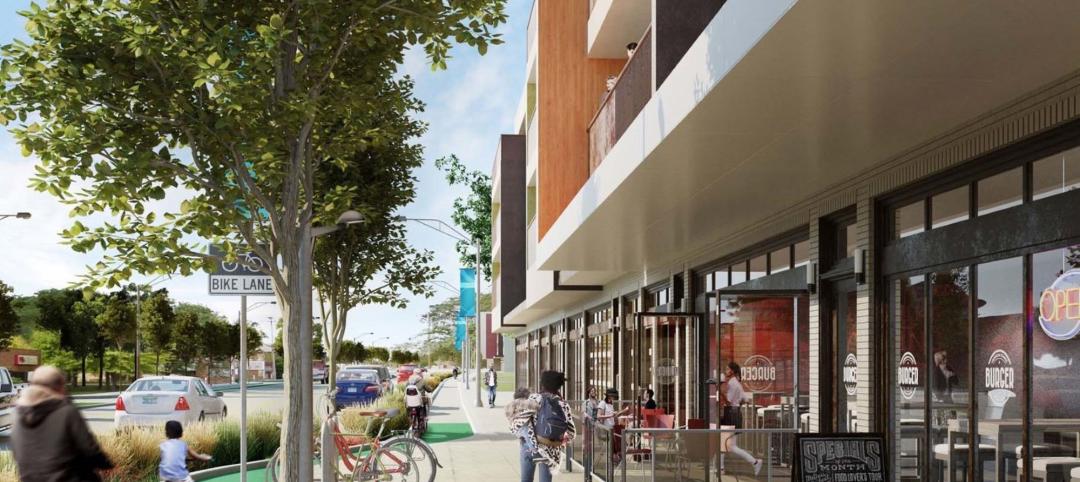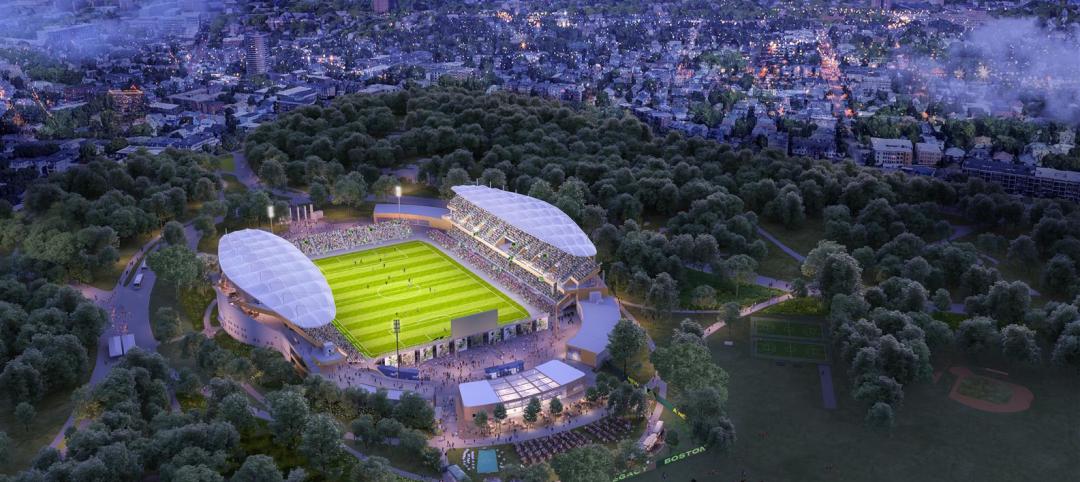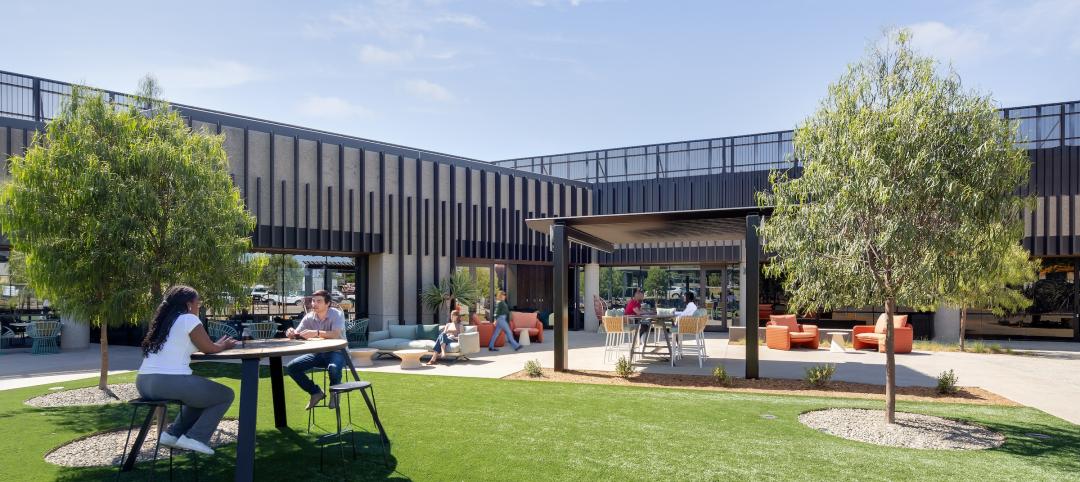International design and architecture firm Perkins Eastman and California healthcare design firm Lee, Burkhart, Liu (LBL Architects) have announced the intent to merge their practices.
The merger will significantly build upon the established practices—particularly healthcare—of both firms and diversify their combined expertise, particularly on the West Coast.
The combined international firm will total 880 employees, adding enhanced resources, client value, and opportunities for employees. The firms will combine their practices in San Francisco, and maintain and grow the practice in Los Angeles. The merger is planned to be effective January 1, 2015.
Bradford Perkins FAIA, Chairman of Perkins Eastman, said, “Perkins Eastman has had a longstanding commitment to expanding on the West Coast, and this merger will realize that commitment for the benefit of our clients and staff. LBL’s respected healthcare architectural design practice and established relationships with some of the top regional healthcare providers naturally align with Perkins Eastman’s vision and goals. Further, this merger will diversify the combined firm’s expertise in the region, importantly enhancing value for our clients and providing growth opportunities for employees.”
Erich Burkhart FAIA, a Founding Partner and Principal with LBL, added, “LBL has sought not only expanded reach and enhanced resources for our expertise in designing innovative healthcare environments, but also an unwavering commitment to clients and to creating environments rich with ingenuity and purpose. We have found that in Perkins Eastman’s practice and people. As one of the largest architectural firms in the country and with a substantial healthcare practice, Perkins Eastman provides the depth of resources, creative design vision, and breadth of expertise to allow us to provide a broader scope of services to our clients and greater opportunities for our employees.”
Both firms were founded with similar beliefs—that architecture can have a direct, positive—recuperative, even—impact on peoples’ lives. The award-winning healthcare portfolios of both firms reflect a commitment to the planning and design of healthcare environments that promote healing, instill comfort, and increase efficiency. The merger will strategically position the combined firm to address the complex functional requirements of 21st-century healthcare environments that, above all, must be patient- and family-centered and that also acknowledge rapidly evolving treatment modalities and new technologies.
About Perkins Eastman
Perkins Eastman is among the top design and architecture firms in the world. With more than 800 employees in 13 locations around the globe, Perkins Eastman practices at every scale of the built environment. From niche buildings to complex projects that enrich whole communities, the firm’s portfolio reflects a dedication to inventive and compassionate design that enhances the quality of the human experience.
The firm’s portfolio includes education, science, housing, healthcare, senior living, corporate interiors, cultural institutions, public sector facilities, retail, office buildings, and urban design. Perkins Eastman provides award-winning design through its offices in North America (New York, NY; Boston, MA; Charlotte, NC; Chicago, IL; Pittsburgh, PA; San Francisco, CA; Stamford, CT; Toronto, Canada; and Washington, DC); South America (Guayaquil, Ecuador); North Africa and Middle East (Dubai, UAE); and Asia (Mumbai, India, and Shanghai, China).
About Lee, Burkhart, Liu
Lee, Burkhart, Liu (LBL Architects) was founded in 1986 with a mission to provide humanistic architectural and design services to a variety of healthcare providers. Today, the firm counts more than 100 healthcare projects for nonprofit health systems, universities, city and county governments, federal agencies, community hospitals, and for-profit healthcare providers in its portfolio. Consistently ranked among the top healthcare design firms in California, the firm was awarded Firm of the Year by a Southern California Chapter of the AIA in 2011. In addition to its healthcare portfolio, LBL’s portfolio includes research and education facilities. LBL has 60 employees in Los Angeles and San Francisco.
Related Stories
MFPRO+ New Projects | Oct 30, 2024
BIG’s One High Line finally reaches completion in New York City’s West Chelsea neighborhood
One High Line, a luxury residential project spanning a full city block in New York’s West Chelsea neighborhood, reached completion this summer following years of delays related to investor lawsuits.
Urban Planning | Oct 30, 2024
Bridging the gap: How early architect involvement can revolutionize a city’s capital improvement plans
Capital Improvement Plans (CIPs) typically span three to five years and outline future city projects and their costs. While they set the stage, the design and construction of these projects often extend beyond the CIP window, leading to a disconnect between the initial budget and evolving project scope. This can result in financial shortfalls, forcing cities to cut back on critical project features.
MFPRO+ New Projects | Oct 30, 2024
Luxury waterfront tower in Brooklyn features East River and Manhattan skyline views
Leasing recently began for The Dupont, a 41-story luxury rental property along the Brooklyn, N.Y., waterfront. Located within the 22-acre Greenpoint Landing, where it overlooks the newly constructed Newtown Barge Park, the high-rise features East River and Manhattan skyline views along with 20,000 sf of indoor and outdoor communal space.
Libraries | Oct 30, 2024
Reasons to reinvent the Midcentury academic library
DLR Group's Interior Design Leader Gretchen Holy, Assoc. IIDA, shares the idea that a designer's responsibility to embrace a library’s history, respect its past, and create an environment that will serve student populations for the next 100 years.
Resiliency | Oct 29, 2024
Climate change degrades buildings slowly but steadily
While natural disasters such as hurricanes and wildfires can destroy buildings in minutes, other factors exacerbated by climate change degrade buildings more slowly but still cause costly damage.
Office Buildings | Oct 29, 2024
Editorial call for Office Building project case studies
BD+C editors are looking to feature a roundup of office building projects for 2024, including office-to-residential conversions. Deadline for submission: December 6, 2024.
Healthcare Facilities | Oct 28, 2024
New surgical tower is largest addition to UNC Health campus in Chapel Hill
Construction on UNC Health’s North Carolina Surgical Hospital, the largest addition to the Chapel Hill campus since it was built in 1952, was recently completed. The seven-story, 375,000-sf structure houses 26 operating rooms, four of which are hybrid size to accommodate additional equipment and technology for newly developed procedures.
Multifamily Housing | Oct 28, 2024
A case for mid-rise: How multifamily housing can reshape our cities
Often referred to as “five-over-ones,” the mid-rise apartment type is typically comprised of five stories of apartments on top of a concrete “podium” of ground-floor retail. The main criticism of the “five-over-one” is that they are often too predictable.
Sports and Recreational Facilities | Oct 24, 2024
Stadium renovation plans unveiled for Boston’s National Women’s Soccer League
A city-owned 75-year-old stadium in Boston’s historic Franklin Park will be renovated for a new National Women’s Soccer League team. The park, designed by Fredrick Law Olmsted in the 1880s, is the home of White Stadium, which was built in 1949 and has since fallen into disrepair.
Laboratories | Oct 23, 2024
From sterile to stimulating: The rise of community-centric life sciences campuses
To distinguish their life sciences campuses, developers are partnering with architectural and design firms to reimagine life sciences facilities as vibrant, welcoming destinations. By emphasizing four key elements—wellness, collaboration, biophilic design, and community integration—they are setting their properties apart.

















